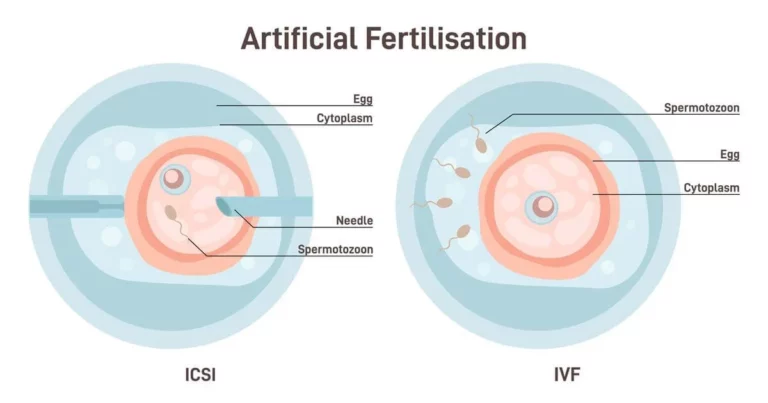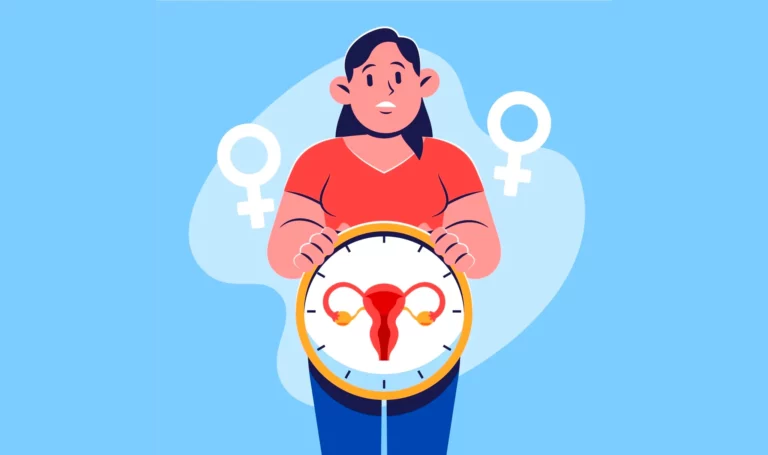In-vitro fertilization (IVF) is a revolution in the branch of assisted pregnancy. It has introduced hope and opportunity for couples who are suffering from infertility and wanting a child to complete their family. The present technological advancements have made it easier than ever to have a healthy genetic child despite having infertility of any kind and degree. One such advancement is blastocyst transfer. Embryo transfer or implantation is the final and the most crucial IVF step, where the embryo (the fertilized egg) is placed back in her uterus to initiate a pregnancy. While traditional embryo transfer is typically carried out 2-3 days after fertilization, blastocyst transfer adopts a new approach that offers multiple advantages over traditional approach.
This comprehensive article intends to describe the concept of IVF blastocyst transfer, its advantages, who are ideal candidates, factors that influence survival of embryos to blastocyst stage, and its success rates by age in India.
What is Blastocyst Transfer?

Blastocyst transfer is an undeniable technical advancement in the procedure of IVF. It adopts the approach in which embryos are cultured for incubation in the laboratory for a more extended period than normal. Where traditional embryo culturing is performed for 2 to 3 days following fertilization, blastocyst culturing continues for 5 or 6 days.
Culturing the embryo for such an extended period offers various advantages.
Why? Because during the extended culturing, the embryo undergoes enhanced development where it is transferred back to the uterus only if it could successfully progress from the early cleavage stage to the blastocyst stage. You can consider a day-5 embryo as an advanced fertilized egg that is made of two parts: the inner cell mass which forms the fetus and the trophectoderm which forms the placenta.
How is Blastocyst Transfer Different from Traditional Embryo Transfer?
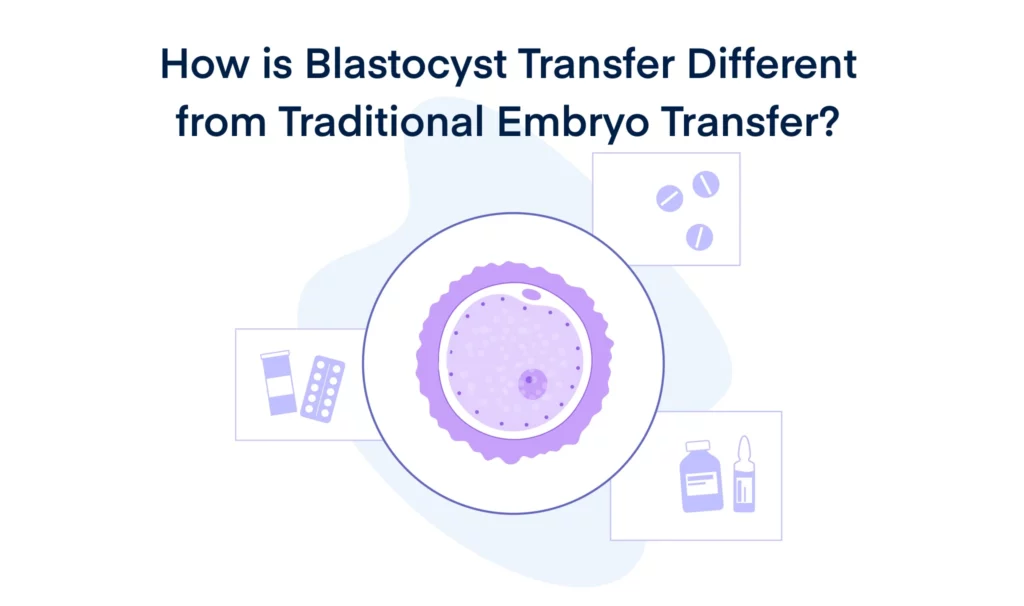
The factor that distinctively makes IVF blastocyst transfer and traditional transfer different is the period the embryos are cultured. In traditional IVF, embryos are transferred back to the woman’s uterus only after the 2-3 days of culturing following the fertilization. Whereas on the other hand, blastocyst culture continues for 5 to 6 days following the fertilization.
On the basis of implantation advantages, common differences between day-5 blastocysts transfer and traditional transfer are:
- Natural Selection: In traditional IVF, embryos are cultured for 2-3 days that is not significant. The likelihood of weaker embryos stopping developing further is high. However, in the blastocyst transfer, they are cultured for a longer period, allowing time for embryologists to assess and neglect weak embryos and transferring only the most robust ones.
- Enhanced Selection: As the embryo grows throughout the culturing process, embryologists require more time to better assess the growth rate and quality of the embryo. So that only the most viable one is transferred, ensuring higher chances of successful implantation. However, in the case of traditional transfer, it is very unlikely to do so.
3. Synchronization with the Uterus: There is a timeline for embryo implantation during which the woman’s natural environment of uterus is most favorable for implantation. The timing of blastocyst transfer aligns better with this favorable implantation timeline than with traditional transfer.
Advantages of Blastocyst Transfer
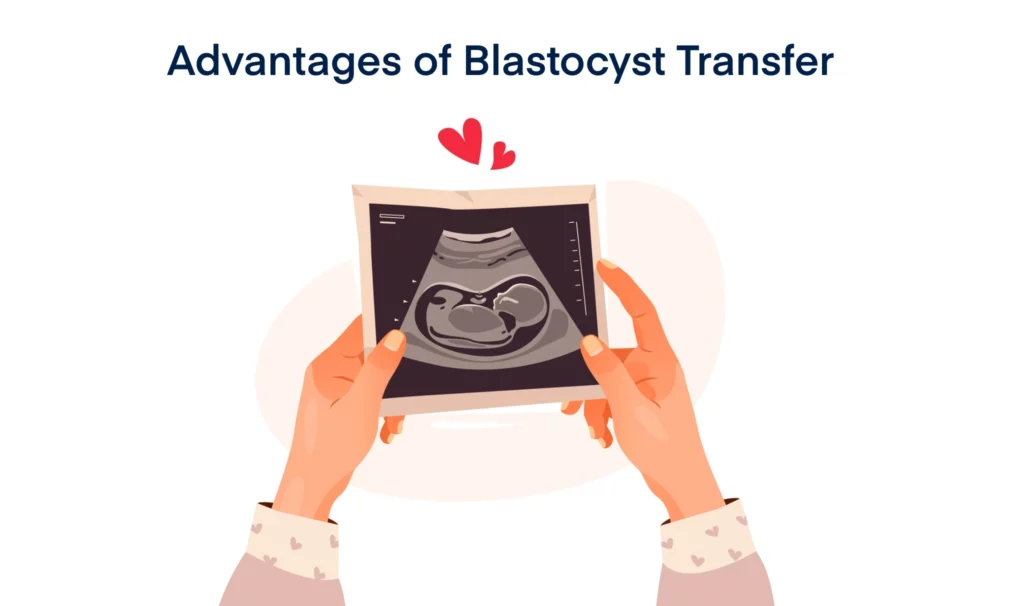
Day-5 embryo transfer in IVF offers several advantages over traditional transfer. These advantages include:
- Higher Implantation Rates: Compared to traditional transfer, blastocyst transfer allows the selection of most robust and viable embryos for implantation. This ultimately improves the chances of implantation success, leading to higher healthy pregnancy rates.
- Minimized Risk of Multiple Pregnancy: Blastocyst transfer allows the embryologists to implant fewer embryos but the ones that are robust and viable, very likely to result in a successful pregnancy. Thus, it minimizes the potential risk of multiple pregnancies and associated complications.
- Better Embryo Selection: In the cleavage stage, it is hard for embryologists to assess whether the transferred embryo will continue to develop or arrest after transfer. But, in the blastocyst stage, embryologists get ample time to assess the quality and growth rate of the embryo before implantation. Also, the embryologist gets time to perform genetic screening to check for any genetic or chromosomal abnormalities.
Who are Ideal Candidates for Blastocyst Transfer?
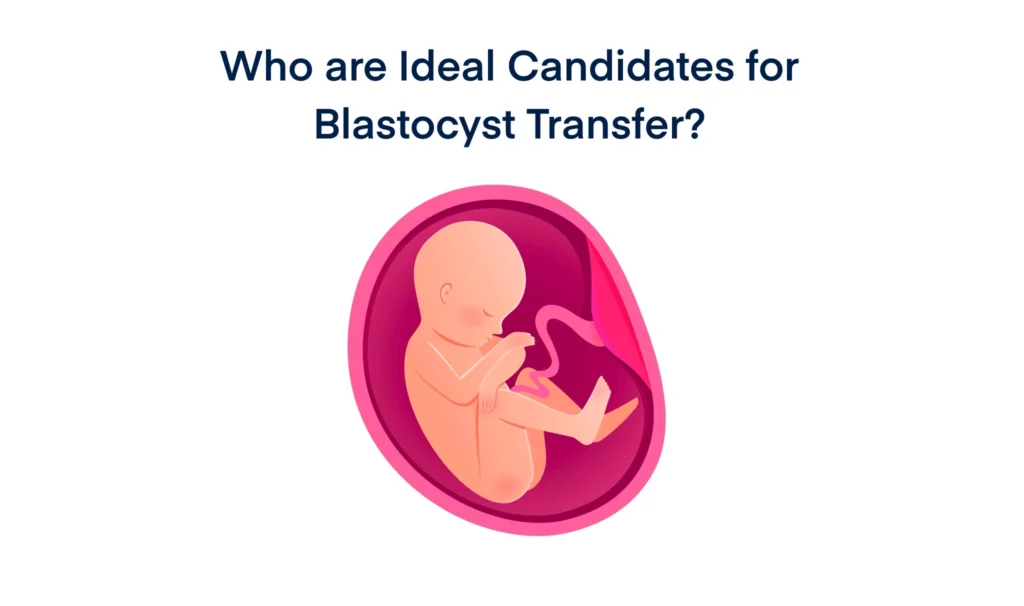
Blastocyst embryo transfer during IVF is generally recommend to patients in the following cases:
- Patients with ample good-quality embryos: When the patient has a good ovarian reserve and provides multiple eggs for fertilization and embryo creation, the embryologist gets the opportunity to culture embryos to blastocyst stage and carefully assess and select the most viable ones for transfer.
2. Patients with past IVF failures: In cases couples who have undergone IVF cycles with cleavage stage (day-2) embryo transfer and had a failure can also be recommended or advised to consider day-5 transfer, as it allows more accurate embryo selection and promises higher pregnancy rate.
Factors That Influence Survival of Embryos to Blastocyst Stage
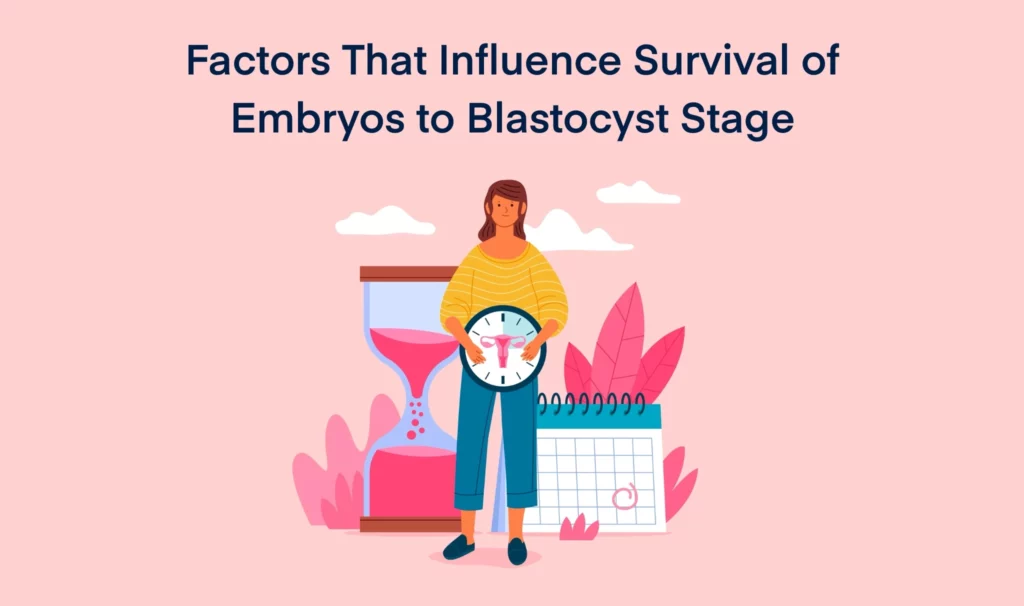
We have understood the difference between IVF blastocyst embryo transfer and traditional transfer, as well as the advantages blastocyst implantation has over traditional implantation.
But there are also certain factors that influence the likelihood of embryos making it to blastocyst stage or arrest in development during the early cleavage stage. These factors include:
- Age of the woman: Maternal age plays a key role in determining the outcome of the pregnancy. As a woman ages, she starts to have a decline in her ovarian reserve and quality of the released eggs. This impacts the likelihood of their appropriate growth of the embryos during culturing, affecting the chances of embryo survival.
2. Quality of the embryos: When the eggs are fertilized and being considered to be cultured, their initial quality is a significant determinant of whether the embryo could survive till day-5 or arrest in the early cleavage stage.
Blastocyst Transfer Success Rates by Age in India
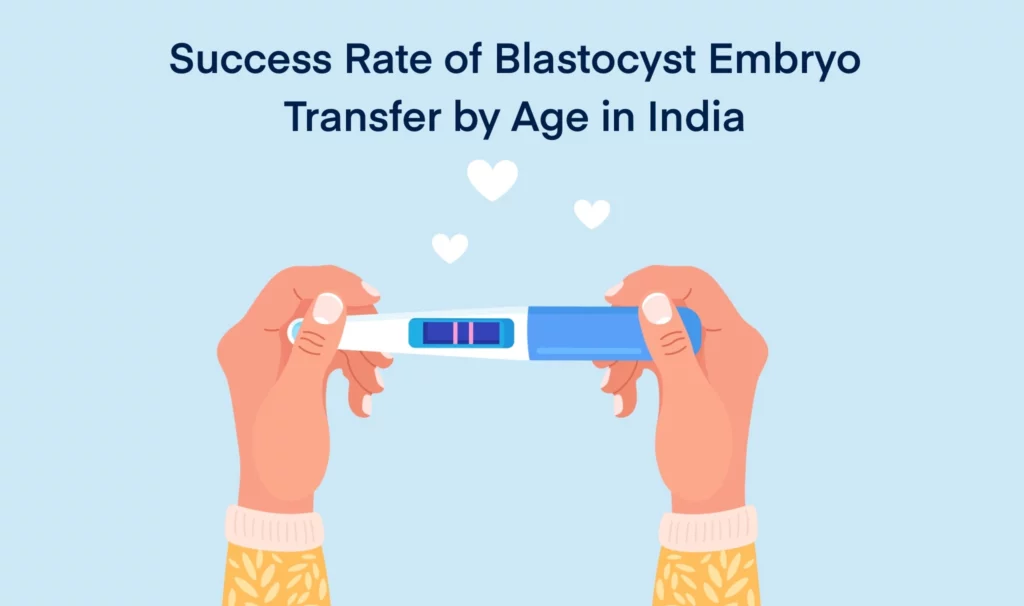
Maternal age of the woman undergoing blastocyst transfer significantly influences the success rate of the procedure. As in other countries, age is a significant factor that affects the outcome of IVF or other assisted pregnancy procedures. Other than the maternal age, several other factors can influence the chances of pregnancy after embryo implantation. However, a woman’s age associated with several biological changes is a major factor determining pregnancy rates.
Following are success rate of day-5 blastocyst embryo transfer by age in India:
- Women under 35: Women who are below the age of 35 are comparatively at a lower risk of developing fertility issues. Also, they are in their healthy reproductive years and typically have a higher pregnancy success rate with blastocyst transfer. Their chances of attaining a pregnancy and healthy childbirth are relatively higher than other age groups, with a success rate of around 40% to 60%.
- Women between 35 and 37: As mentioned earlier, as women age, they start to have a gradual decline in their fertility. With that, their chances of successful blastocyst transfer also declines to some extent. The estimated success rate in this age group is about 35% to 45%.
- Women between 38 and 40: As aging continues, women experience further fertility decline and the chances of achieving a pregnancy and giving live birth with blastocyst transfer become as low as 20% to 35%.
- Women over 40: For women over the age of 40 and closest to their menopause have the lowest chances of successful pregnancy and live birth compared to younger age groups. The estimated blastocyst transfer success rate can be as low as 10% to 20%.
Well, it is important to note that mentioned success rates are approximate and are likely to vary depending on other factors such as the couple’s overall health, type and cause of infertility, outcomes of past IVF cycles, IVF doctor’s expertise and more. In certain cases, it is possible that a 40-years old woman has a successful implantation in the very first attempt, though a 35-years old woman may have to undergo multiple IVF cycles or vice versa.
Does multiple blastocyst transfer further improve success rates?
In certain cases, 2 or more blastocyst embryo transfer can improve pregnancy success rates. However, this decision should only be made in consultation with the fertility specialist, depending on the patient’s medical history, past IVF outcomes, and personal preferences. Moreover, multiple transfers also pose the patients at a risk of twin pregnancy and associated complications.
- 2 blastocyst transfer increases the risk of twin pregnancy rate, typically by 25% to 30%. And,
- 3 blastocyst transfer can increase this risk by up to 40% to 50%.
When to Do a Pregnancy Test after Blastocyst Transfer?
Following a day-5 blastocyst embryo transfer, IVF doctors generally recommend the patient to wait for approximately 9 to 11 days before taking a pregnancy test. This timeframe may vary depending on individual circumstances. Some patients may also be advised to wait for up to 2 weeks before taking the pregnancy test. It is important to note that taking the pregnancy test too early can indicate a false negative result due to hCG hormone being undetectable.
This waiting period is to allow the embryo enough time to implant successfully and the body to start producing human chorionic gonadotropin (hCG) hormone. hCG is a hormone that indicates pregnancy in a pregnancy blood test. Higher than 25 mIU/mL hCG level indicates a positive pregnancy.
The Bottom Line

Blastocyst transfer in IVF is a revolutionary advancement in the field of assisted pregnancy. It has several advantages over the traditional transfer technique. The method increases the likelihood of successful implantation, minimizes the risk of multiple pregnancies and allows enhanced embryo selection. It has many benefits too, one such great benefit out of them is higher pregnancy success rates that gives hope to infertile couples struggling to start their family for long. Blastocyst transfer is nothing less than a blessing for couples to fulfill their dream of having a child and starting their family.




